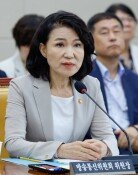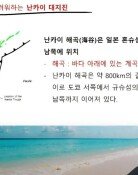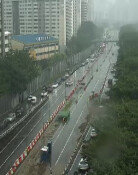Taxpayers¡¯ funds are easy money
Taxpayers¡¯ funds are easy money
Posted November. 15, 2000 15:37,
The taxpayers¡¯ money widely is regarded as easy money. In fact, it has been pointed out that the follow-up of the public funds poured into insolvent financial institutions is too loose.
The government has been focusing on providing public funds to insolvent banks in orders to revive them and there was no follow-up measures. In the process of corporate and financial restructuring, the government handled the question according to circumstances and has made a rough estimate of the public fund required.
Moral hazards prevail at financial institutions in which the government has poured public funds, but there is no proper means to prevent it. Most of them consider the public fund as easy money and keep asking for additional aid after the first injection of money. Some banks and investment-trust companies even paid interim severance pay to their employees on the eve of receiving the public fund.
As insolvent institutions' top management changes frequently, executives who bring in public funds are respected by employees. Government officials said that they were unable to squeeze financial institutions because their trade unions are too strong to call for self-relief efforts.
It is a controversial issue that the total amount of public funds needed is changing continuously. In 1998, the government announced that it would pour in a total of 64 trillion won, but the amount has swollen to as much as 109 trillion won in the process of providing the money. Now, the government plans to raise an additional 40 trillion won, saying that the amount is still is lacking because of the question of Hyundai Engineering & Construction, as well as liquidation of a group of insolvent companies.
Critics say that the snowballing amount of public funds being tapped is due to the inability of the government to predict the fund required for insolvent corporations and financial institutions.
Jang Soon-Young, economics professor at Hanyang University, said that the government has been saying that it might place Hyundai Engineering & Construction under court receivership. So it is contradictory to say that it hasn't calculated Hyundai Engineering & Construction under the category of public fund injections. He pointed out that the government had to calculate public fund under various scenarios and disclosed it openly.
Also, the follow-up measure about financial institutions that have received public funds has been too loose. The Ministry of Finance and Economy contends that raising and pouring in taxpayers¡¯ money is done by the ministry, but its supervision is handled by the Financial Supervisory Commission. On the other hand, the Financial Supervisory Commission says that the investment agreement is concluded by the Korea Deposit Insurance Corp. (KDIC) and the KDIC is controlled by the Ministry of Finance and Economy.
Executives at the steering committee of the KDIC and the management committee of the Korea Asset Management Corp. (KAMCO) consist of former public servants. For this reason, it is in question of whether they can perform supervision of these companies in a proper way. Woo Young-Ho, vice president of Korea Securities Research Institute, said that it is vital to review utilization of public funds and follow-up of the funds.
Choi Young-Hae moneychoi@donga.com






![“동대표 갑질 못 참겠다”…관리사무소 전원 사직한 아파트 [e글e글]](https://dimg.donga.com/c/138/175/90/1/wps/NEWS/IMAGE/2025/07/08/131958287.2.jpg)
